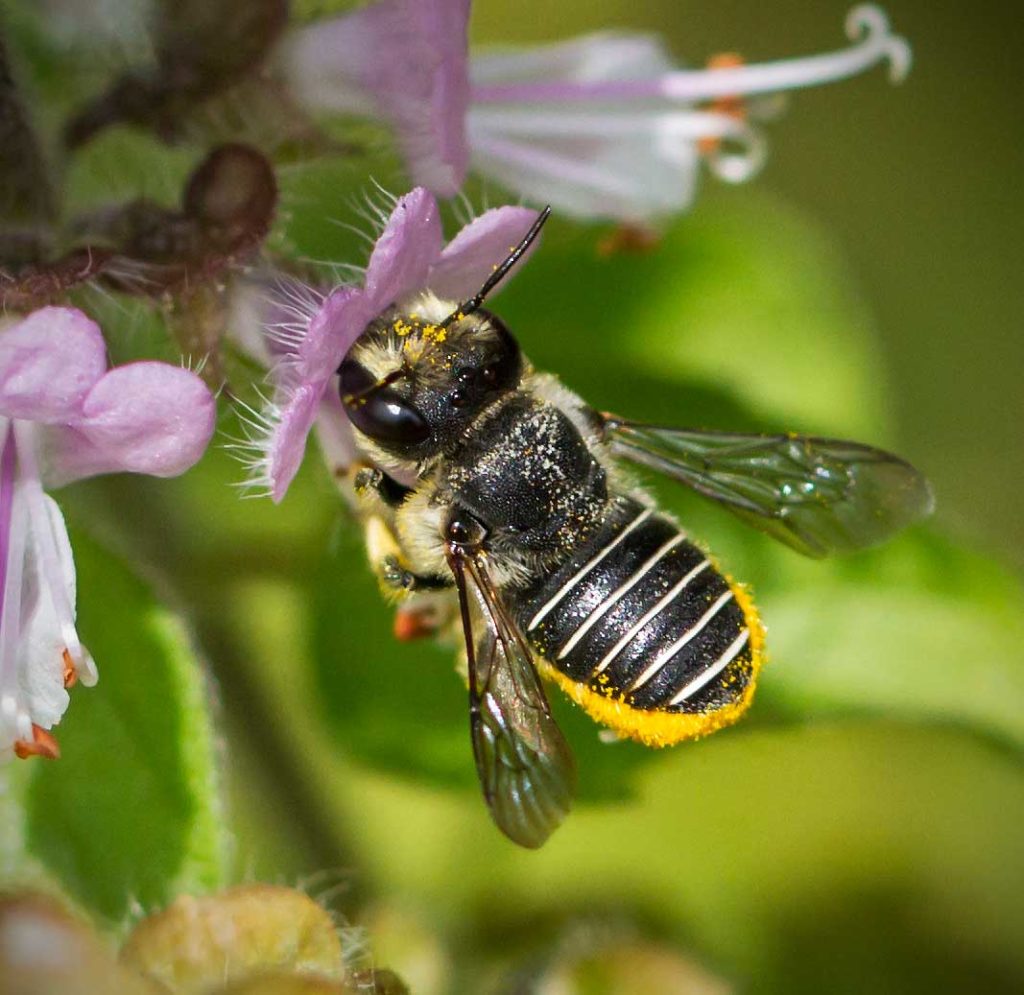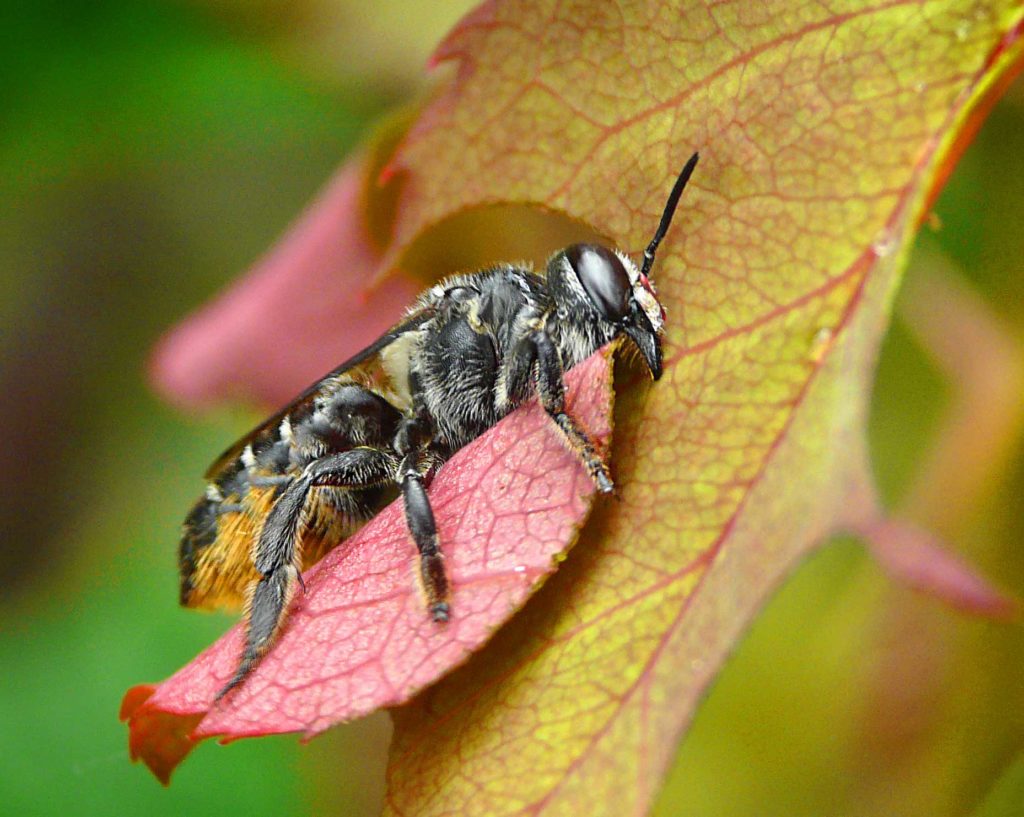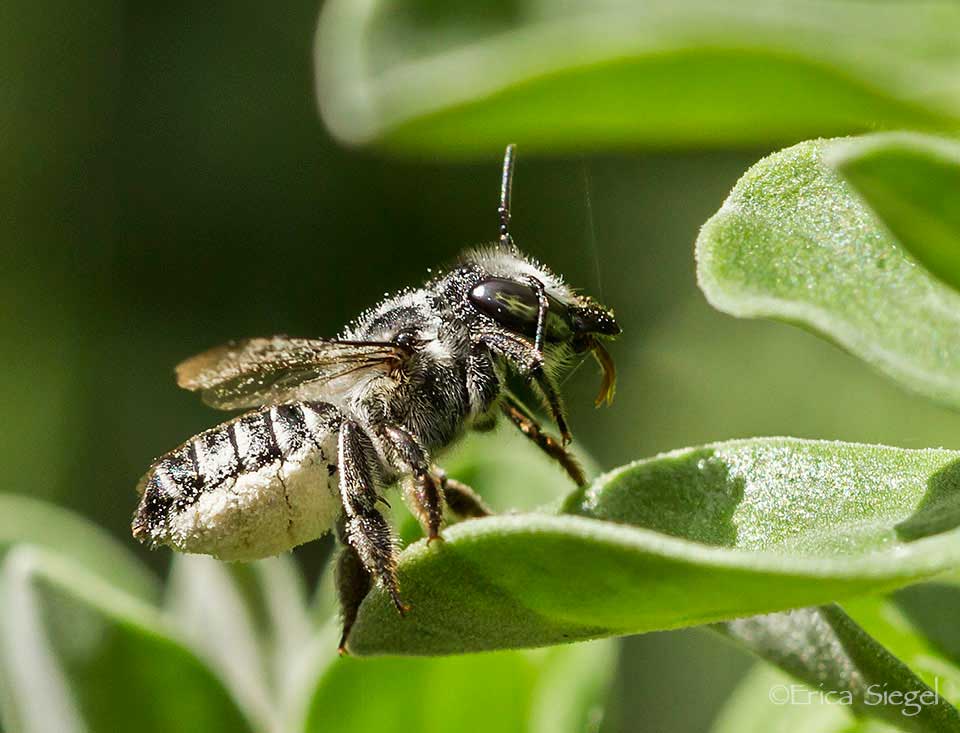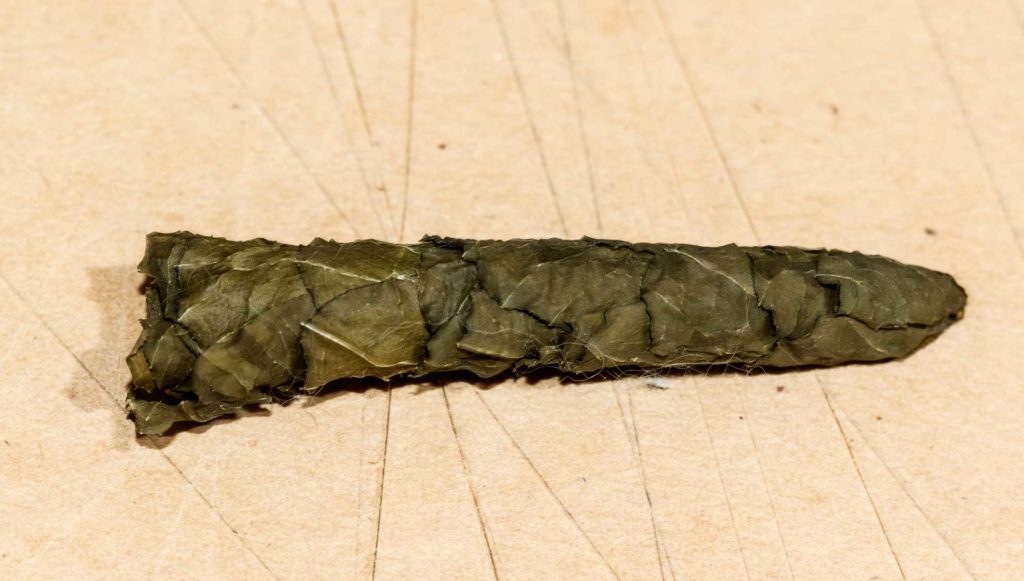There are about 27 species of leafcutter bees in Australia. They are found in all states in both coastal and drier inland areas. They range in size from 6-15 mm and most are black with white or orange-gold stripes of hair on their abdomen. They carry dry pollen on special bristles under their abdomen.

Leafcutter bees and resin bees look similar but leafcutter bees can usually be distinguished by their relatively wide abdomen, which tapers into a point while resin bees have a narrower, cylindrical abdomen. Leafcutters alight on flowers with their wings spread, while resin bees fold their wings.
Very similar to leafcutter bees is the introduced African Carder Bee. It is 5-8 mm long and has white abdominal stripes that lack hairs, unlike the hairy bands on the native leafcutter bees.

Bee watchers often first discover leafcutter bees when they notice rows of neat circular or elongated cuts on the edges of some leaves in their garden. Leafcutter bees use the discs of leaf to build nests. They particularly like the soft leaves of desmodiums, sennas, roses, ginger, bauhinia, buddleia and bananas. They very quickly snip the leaf and then carry it in between their legs to their nest site.
Leafcutter bees may nest in many different spaces such as existing holes in timber or masonry, hollow stems, gaps in door/ window frames, old folded towels left outside, rock walls and outdoor furniture. They may also use artificial bee nests consisting of varies size holes drilled in untreated hardwood and/ or bundles of hollow stems (e.g. bamboo), hung in trees. Each female builds her own nest. The cut leaves are used to make a tube as a nest for the eggs or to line an existing hole with it. The leaves are cut in various shapes, round and elongated, to suit the construction of the cell for the egg. The cell is then stocked with a mixture of nectar and pollen in which the leafcutter bee lays her eggs.

She lays female eggs first and the last couple are male. More circular leaves are cut to close off the cell. She then moves on to constructing the next cell until the hole or tube is filled with cells. The hole is then plugged with rough leaf cuttings.
When the eggs hatch, tiny larvae eat the provisions and, when fully grown, they spin silky cocoons and then develop into pupae, finally emerging as adult bees. Male eggs mature earlier and the adult male bee breaks open the nest to emerge first. Immature bees may hibernate through winter and finish developing into adults the next spring.

You can attract native bees to your property by providing a diverse range of native leafy plants, creating small rock walls, leaving hollow branches and fallen timber on the ground and, possibly, consider constructing a small native bee wall.
References
Dollin A, Batley M, Robinson M & Faulkner
B (2000) Native Bees of the Sydney Region:
A Field Guide. Australian Native Bee
Research Centre.
Personal communication – Dr. Michael
Batley, Australian Museum; Dr. Ken
Walker, Victoria Museum and Dr. Anne
Dollin, Australian Native Bee Research
Centre. www.aussiebee.com.au
Article and photos by Erica Siegel
Native bee enthusiast

Wow, i just found them flying around my roses & now i know who cut my roses’ leave.
my native bees are leafcutters. For years I’ve been finding these cylindrical leaf cocoons in the dreaded of my outdoor lounge.
My native bees are leafcutters. For years I’ve been finding these cylindrical leaf cocoons in the creases of my outdoor lounge,
I’m so excited. I bought a small bee house to encourage them to stay. I put some bees wax on the outside too.
I hope one day to find a leaf-cutter bee ‘cocoon’ in my backyard.
I’ve been watching a busy leaf cutter bee today. She has been taking little cut pieces of leaves into a wind chime tube. It is so fascinating to watch.